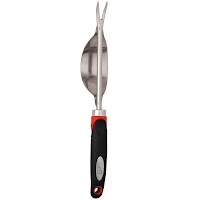Earlier this year I was surprised to have a few of my gardening friends tell me that they never save their seeds! It is probably apparent from previous posts that I really like to save my garden seeds. From a practical perspective it saves me the time and money of buying all new seeds every year. But, more than that, saving seeds makes gardening a continuum as opposed to a temporary, seasonal event. The same snap peas that I ate with my neighbors this Fourth of July were from the peas that we ate together last year, and the year before, and so on.
Another reason I like to save seeds is so I can share them! It is said that people usually give the gifts that they themselves want to receive. I try to be mindful of this, but the giving of seeds might be an exception.
Last year I made little seed books that I gave to my gardening family & friends. This year I found some origami paper that I have turned into seed envelopes.
I have turned them over so the labels won't show and I don't completely ruin the surprise for anyone.
I think the giving of things you want to receive has paid off, because I was also the recipient of several neat seeds packages this year. I am not entirely sure if this is legal, so the giver shall remain nameless, but a friend of mine went to France twice this year and brought back seed packs for me on both occasions! From the first visit came seeds for a small round eggplant called 'Ronde de Valence'. When I looked it up online it was categorized as 'extinct' in the United States! The eggplant was delicious, and a perfect size for making eggplant parmesan sandwiches. Mmmm. I also received spinach and mache. The second trip was recent, so I didn't grow any of these seeds this year, but they included endive, leeks, a variety of white onion called 'Hatif de Paris', lettuce, and cherry tomatoes. I am intrigued by the cherry tomato package. My French isn't fantastic, but I recognize the word 'cocktail' when I see it!

The mixology department may need to conduct some research.






















